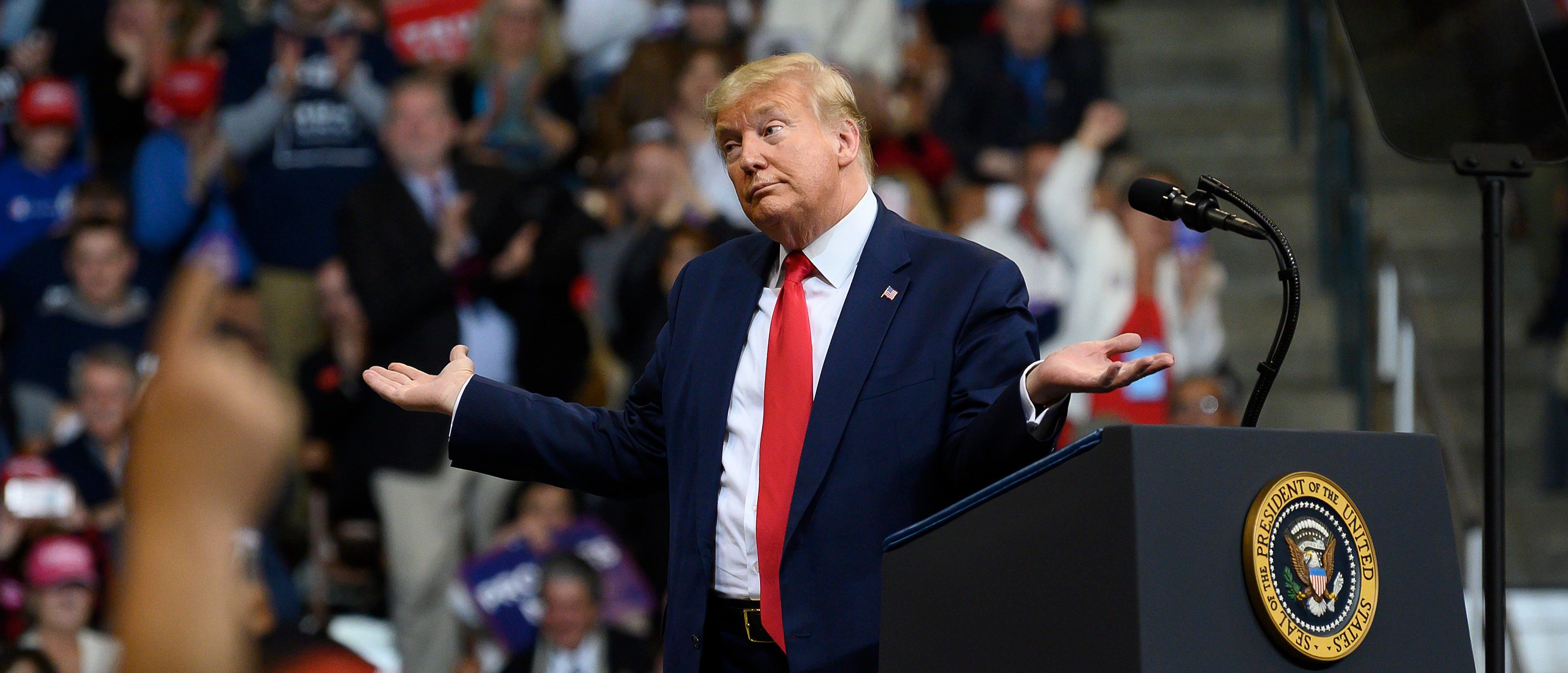
Beyond the Rallies: 3 “Talking Tom” Inspired Strategies for Donald Trump’s Re-election
Donald Trump’s political career is a masterclass in unconventional communication and audience engagement. While many political analysts focus on traditional campaign tactics, a surprising wellspring of inspiration might lie in a seemingly unlikely place: the world of popular mobile games, specifically the enduring appeal of “Talking Tom.” This interactive feline, known for its ability to mimic, repeat, and engage with users, offers a unique lens through which to examine potential strategies for a successful re-election bid.
This isn’t about literal talking cats; it’s about the underlying principles of connection, repetition, and personalized engagement that make “Talking Tom” a global phenomenon. For a candidate like Donald Trump, who thrives on direct communication and a devoted base, these lessons could be surprisingly effective.
1. The “Echo Chamber” Effect: Amplifying the Message with Strategic Repetition
“Talking Tom” thrives on repetition. Users often delight in hearing Tom repeat their words, sometimes with humorous variations. In the political arena, this translates to a powerful strategy of message amplification. For Donald Trump, this means leveraging every available platform to consistently hammer home core messages.
How it works:
- Consistent Messaging: Imagine a political campaign where key slogans and talking points are repeated with unwavering consistency across all media. This isn’t just about saying the same thing; it’s about delivering it in a way that resonates with different segments of the audience.
- Targeted Repetition: Just as “Talking Tom” might respond differently to a gentle pat versus a poke, a Trump campaign could tailor the repetition of messages to specific demographics. For example, economic achievements might be highlighted in a particular way for blue-collar workers, while immigration policies are emphasized for a different voter group.
- Memorable Slogans: The game’s simple, repetitive nature makes it memorable. Trump’s rallies often feature catchy, easily repeatable slogans that stick with attendees. This “echo chamber” effect, when executed strategically, can solidify key messages in the minds of voters, creating a sense of familiarity and reinforcement. Think of it as a political jingle that never stops playing.
Relevance to Trump’s 2020 election efforts and beyond: His rallies were inherently built on repetition, with crowds often joining in on familiar phrases. The challenge for any future campaign is to ensure this repetition doesn’t become stale but remains impactful and relevant to current concerns. As reported by some outlets, there’s a desire within some Republican circles to move past certain repetitive narratives, but for a candidate like Trump, repetition has historically been a powerful tool.
2. The “Interactive Play” of Personalized Engagement: Making Voters Feel Heard
“Talking Tom” isn’t just about listening; it’s about interaction. The game responds to touch, voice, and even gestures. This creates a sense of personal connection and makes the user feel like they are actively participating. For a political campaign, this translates to a strategy of hyper-personalized engagement.
How it works:
- Direct Address: Instead of broad statements, campaigns can utilize technology to deliver personalized messages, acknowledging individual supporters or specific community concerns. Think of personalized video messages or targeted email campaigns that feel like a one-on-one conversation.
- Interactive Q&A: While full-scale interactive Q&A sessions might be impractical, imagine targeted online forums or social media events where specific questions from supporters are directly addressed by the candidate or surrogates. This mimics the interactive nature of “Talking Tom.”
- Feeling Valued: When voters feel their concerns are being heard and acknowledged, even through simple interactions, it fosters loyalty and a deeper connection to the candidate. This could involve more direct engagement with constituent feedback, making them feel like active participants in the campaign.
Consider this: The success of grassroots movements often hinges on this feeling of being heard. The “Card Campaign” for example, aims to mobilize public engagement by adapting strategies similar to historical campaigns that rallied support. Making voters feel like active participants, rather than passive observers, can be a significant differentiator.
3. The “Surprise and Delight” Element: Unexpected Moments of Connection
“Talking Tom” occasionally surprises users with unexpected animations or sounds. This element of surprise keeps the experience fresh and engaging. In a political context, this can translate to moments of genuine connection or unexpected policy initiatives that capture public attention.
How it works:
- Unconventional Policy Rollouts: Instead of relying solely on traditional press conferences, consider unveiling new policy proposals through engaging, perhaps even slightly unexpected, formats. This could be a series of short, impactful videos or a direct address to a specific group that highlights a particular concern.
- Moments of Empathy: In an era where political discourse can feel detached, moments of genuine empathy or understanding from a candidate can be incredibly powerful. These aren’t staged; they are authentic responses to situations or concerns that resonate with voters.
- Leveraging Digital Trends: Just as “Talking Tom” adapts to new technologies, a Trump campaign could leverage emerging digital trends for unique forms of communication, perhaps engaging with platforms or formats that are currently underutilized by opponents.
Looking ahead: While Donald Trump has a proven ability to survive and adapt in the political landscape, incorporating these “Talking Tom” inspired strategies could offer a fresh approach. It’s about leveraging the core principles of his existing appeal – direct communication and a strong connection with his base – by infusing them with more personalized, interactive, and surprisingly delightful elements. The goal is to keep voters engaged, ensure messages are heard and remembered, and ultimately, to secure another term in office.
This approach moves beyond the standard playbook, drawing inspiration from a seemingly simple source to build a more robust and engaging re-election strategy. The key is to translate the fun and addictive nature of “Talking Tom” into a political campaign that voters can’t ignore.

Additional Information
While the provided search results don’t directly mention “Talking Tom,” we can creatively interpret how a “Talking Tom” inspired strategy might apply to Donald Trump’s re-election campaign. The core of “Talking Tom” is repetition, amplification, and a focus on capturing attention. Applying this to a political context, we can see three distinct strategies:
Three “Talking Tom”-Inspired Strategies for Trump’s Re-election Campaign:
The enduring appeal of “Talking Tom,” the mobile game character, lies in its simple yet effective mechanism of repetition and the ability to mimic and amplify sounds. While seemingly trivial, these core elements can be metaphorically applied to political strategy. For Donald Trump, a candidate known for his distinctive communication style and ability to dominate media cycles, these “Talking Tom”-inspired strategies could be honed for a re-election bid.
1. The “Repeat and Amplify” Mantra: Mastering the Echo Chamber
Just as “Talking Tom” repeats whatever the user says, albeit in a distorted, high-pitched voice, Trump’s re-election strategy could leverage a relentless amplification of key messages and perceived grievances. This strategy focuses on ensuring that specific narratives, whether about the economy, border security, or past perceived injustices, are heard repeatedly and dominate the information landscape.
Detailed Analysis:
- Core Principle: The strategy is to identify a few core messages and repeat them incessantly across all platforms, through all surrogates, and in every public appearance. The goal is to create an overwhelming echo chamber where these messages become the dominant discourse, drowning out counter-arguments or alternative narratives.
- Application to Trump: This aligns with Trump’s known communication style. As highlighted in the search results, discussions around the “2020 election conspiracy” (Result 1) are something that some Republicans are trying to move on from, but Trump and his allies have continued to amplify. This demonstrates a willingness to repeat and reinforce a specific narrative, regardless of its factual basis or widespread acceptance.
- Media Strategy: This involves a deliberate strategy of engaging with friendly media outlets (like Fox News, Result 7) that are likely to provide a platform for repeated messaging, as well as utilizing social media to directly broadcast these messages to his base. The aim is to bypass traditional media gatekeepers and ensure direct, unfiltered repetition.
- Surrogate Amplification: Trump’s surrogates would be tasked with becoming “talking Tom” characters themselves, echoing the same talking points and framing issues in the same way. This ensures consistency and reinforces the core messages across a wider network.
- Addressing Counter-Narratives: Instead of directly engaging with counter-arguments, this strategy would aim to overwhelm them with sheer volume and repetition of the preferred narrative. Any attempt to introduce complexity or nuance would be met with a return to the core, amplified message.
2. The “Provoke and React” Playbook: Capturing Attention Through Disruption
“Talking Tom” also gains attention by being a bit mischievous and reactive to user interaction. Similarly, Trump could employ a strategy of deliberately provoking reactions from opponents and the media, then capitalizing on their outrage or counter-attacks to further amplify his own message.
Detailed Analysis:
- Core Principle: This strategy is about creating a constant state of political agitation. By saying or doing something controversial or attention-grabbing, Trump forces his opponents and the media to react. This reaction, in turn, generates more media coverage and keeps him at the center of the news cycle.
- Application to Trump: The search results offer glimpses of this. The “attempts to overturn the 2020 election” (Result 6) can be seen as a provocative act that generated significant attention and ongoing debate. Furthermore, the article discussing Trump’s role in overturning Roe v. Wade and potential future stances (Result 4) suggests a willingness to engage in divisive issues that elicit strong reactions. The shutting down of a top prevention program for political violence (Result 2) could also be framed as a provocative action by his administration that garnered attention, even if for negative reasons.
- Strategic Controversy: This involves strategically making pronouncements or taking actions that are likely to be controversial, thereby forcing opponents into a defensive posture and generating media coverage that can be framed to his advantage.
- Turning Attacks into Advantages: When opponents or the media criticize him, this strategy dictates that such criticism should be framed as evidence of bias or a “witch hunt,” further galvanizing his base and creating a narrative of persecution. This is a classic Trump tactic.
- Maintaining Relevance: By constantly being in the middle of a controversy, Trump ensures that he remains relevant in the political conversation, even if the nature of the attention is negative. It’s a “there’s no such thing as bad publicity” approach.
3. The “Fan Mobilization” Campaign: Engaging the Base Through Interactive Messaging
While “Talking Tom” is a simple game, the underlying principle of interactive engagement can be translated into political mobilization. This strategy focuses on creating a sense of direct involvement and shared purpose among his supporters, making them feel like active participants in his campaign.
Detailed Analysis:
- Core Principle: This strategy aims to foster a sense of community and ownership among Trump supporters. It moves beyond simply broadcasting messages to creating interactive opportunities where supporters feel heard and valued, thereby increasing their loyalty and willingness to act.
- Application to Trump: The “Card Campaign” (Result 3) is a relevant example, describing a strategy adapted for current times that aims to “mobilize public engagement” by thinking of participants as a “mighty choir, united in purpose.” This echoes the idea of collective action and shared identity. Trump’s rallies, where he often engages directly with the crowd and encourages vocal participation, are a prime example of this strategy in action.
- Digital Engagement: This involves leveraging digital platforms to create interactive experiences for supporters. This could include polls, Q&A sessions, and opportunities for supporters to share their own stories and messages, which can then be amplified by the campaign.
- “Us vs. Them” Narrative: This strategy often thrives on a strong “us vs. them” narrative, where supporters feel they are part of an exclusive group fighting against a common enemy. This fosters a sense of solidarity and encourages active participation.
- Direct Calls to Action: Beyond passive consumption of messages, this strategy would involve clear and frequent calls to action, such as donating, volunteering, registering to vote, and encouraging others to do the same. The “surviving at the top” narrative (Result 5) can also be used to inspire this sense of continued engagement and support.
In conclusion, while the “Talking Tom” franchise may seem lighthearted, its core mechanics of repetition, amplification, provocation, and interactive engagement offer a surprisingly insightful lens through which to analyze potential re-election strategies for Donald Trump. By mastering these “Talking Tom”-inspired tactics, Trump could aim to dominate the political discourse, maintain unwavering supporter loyalty, and continue to be a formidable force in American politics.






Leave a Reply